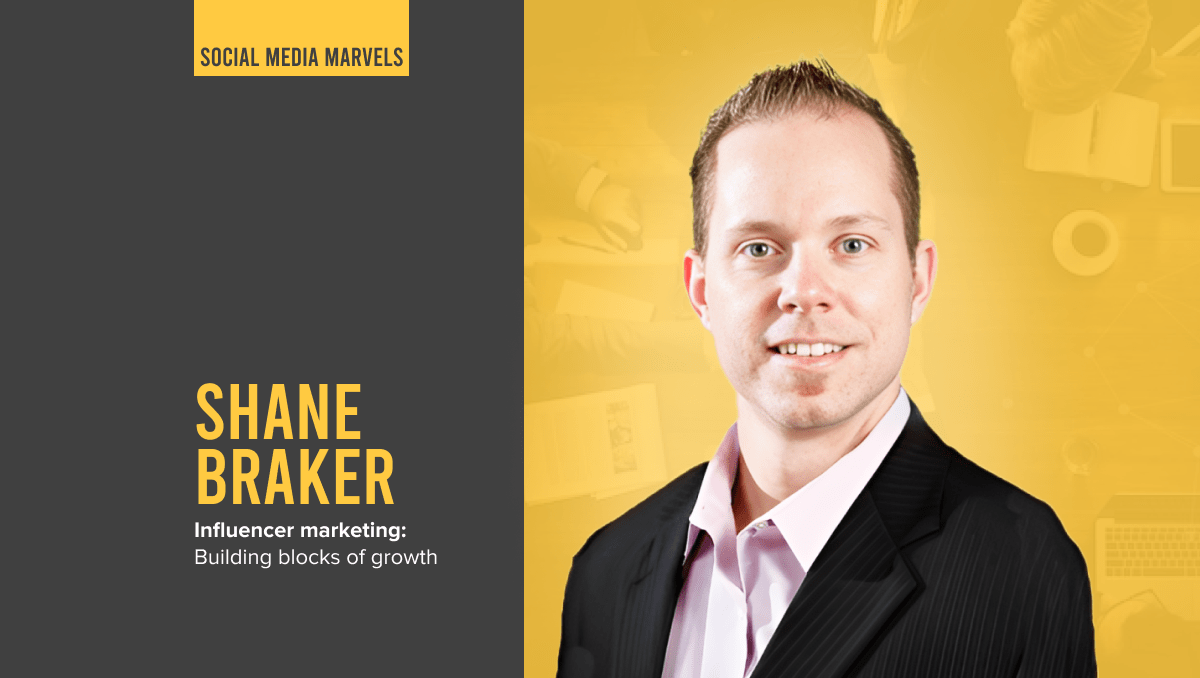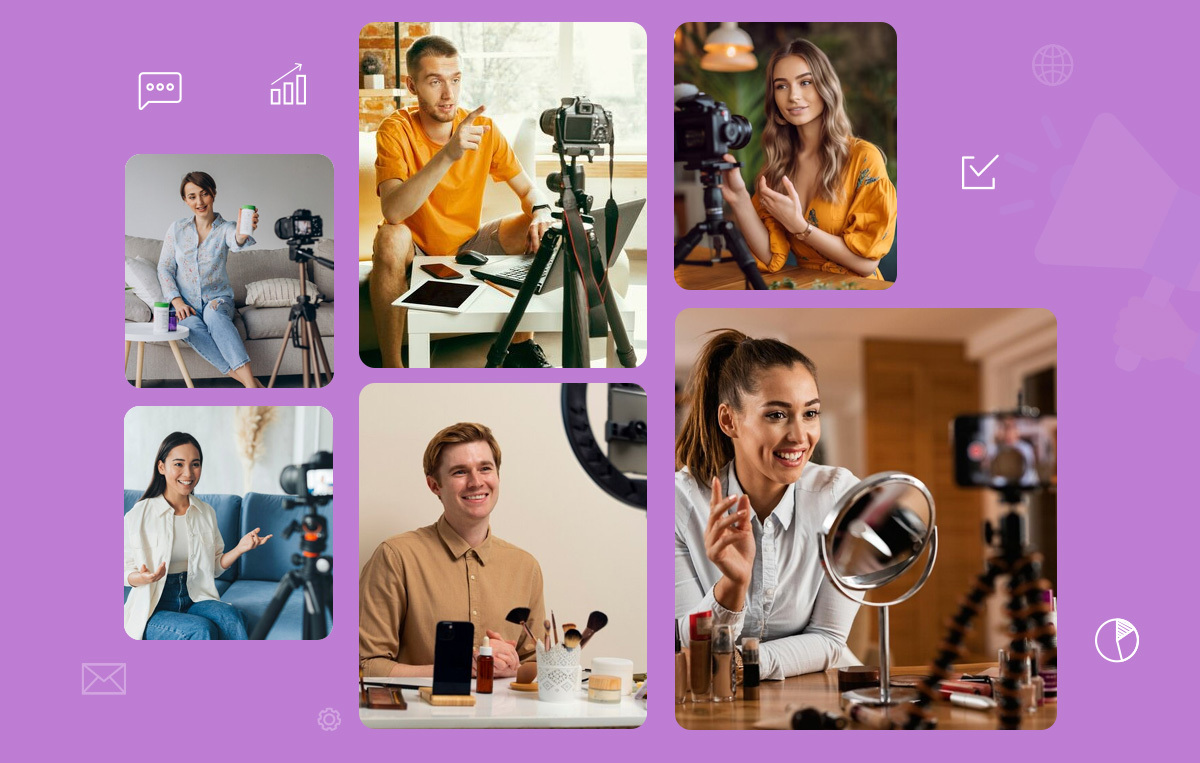The Social Media Marvels and Shane Barker discuss the monetary aspects of Influencer marketing. How the strategy is seeing a shift in pattern with influencers collaborating with various competitive brands. Should the influencers collaborate with smaller companies? And don’t forget to check out the success story Shane has shared in the end. You might just end up finding some hidden jewels!
Find the summarized transcript from the interview down below.
What Do I Expect from this video :
- Earning as an influencer.
- How does a niche brand compete with the big guns to get influencers on-board?
- Influencer marketing works better with certain platforms?
- Future trends and shift in influencer marketing
- A client success story with effective actionables.
Q – One of the basic measures of influencer strategy is ROI. How can a brand or an influencer measure whether the ROI is being fairly generated?
A – In terms of payment – influencers earn via affiliate commission. When it comes to ROI from an affiliate – there are several ways to look into that. One being a custom code for each affiliate. Another being an affiliate link which tracks all referral traffic directed by the person.
Looking from an affiliate’s perspective – calculating their return is proportionate to the efforts they put in. In order to earn a retainer besides commission, an influencer really has to move the needle, and bring in a strong game. Your pitch should involve the resources you need from the company as well as a strategy in place to push out extra resources at a personal cost.
Influencers these days don’t prefer a direct affiliate relationship. Because even after all the efforts that have been put in by the affiliate, the control still lies in the hands of the sales people of the company. They prefer putting efforts behind a direct sale and cut out the middlemen and nurture aspect.
With SaaS sales, it’s easier to measure the influencer contributions so far as the landing pages are well optimized and all the processes are set in place.
Q – What should an influencer do when he or she is dealing with a comparatively newer or smaller brand?
A – When an influencer associates oneself with a particular brand – they want to be addressed as affiliates. They don’t want to nurture leads, or answer their questions, resolve company-side issues just because they recommend using that product.
As an influencer, one needs to test out the customer journey before setting out promoting the brand. Once the journey is enhanced, closing in on deals gets a lot easier. With bigger brands, this journey is a lot easier to manage. They already have set funnels and branding.
With a smaller brand, the influencer has to start right from awareness, to information, and education.The influencer needs to recognize a unique sell, showcase they use it just because of that, and let the audience decide for themselves between the Nike’s and the Newbie’s.
At the end of the day, it’s going to be a little bit of a harder sell because once again, it’s not a household name.
Q – There are specific platforms which support this strategy. Instagram, for example, is very influencer conducive. Other content platforms like TikTok are also coming up. So, do you think it is here to stay?
A – With newer platforms like TikTok, their demographics is quite young. These newer platforms don’t only need to form an audience base but also think about monetization. You can monetize it using ads or some other way, which you need to figure out.But they are big in China, so they do have the audience. They just need to figure out a way to manage the traffic and popularity. Take a look at Twitter – they found the audience and funding at the right times, so they could figure out monetizing later. But on the other hand, we also have Amazon which has been in the red for too long.
So while growth is good, growing too fast can be the reason of your brand’s demise. So it is important to scale, while having appropriate funding resources – either venture or debt. And then you can also figure out a way to monetize.
Q – Future trends within the strategy that brands should keep in mind for 2020?
A – One of the trends that we as an agency would focus on is education. I have put together a course – HowToBeAnInfluencer. It aims to educate influencers on how to get the big brands on-board. Some of the things we educate the influencers on – having a strong personal brand and a website.
Reaching out via emails or social networks lack consistency due to ever-changing algorithms. Having a website and driving traffic to your money pages would help you convert a lot better. Besides educating influencers, we also work with brands – educating them on leveraging influencer marketing the right way.
Brands need to understand that this isn’t a one-time activity. Neither it is the only activity one should depend on. Diversify your budgets across SEO, branding activities, etc. I have set up workshops for 35 brands, put out amazing content, worked with brands like Amazon, purple.com.
So the course for influencers entail topics that help them work better with brands. While from a brand perspective we tap into budgeting, putting together campaigns, designing briefs and negotiating contracts.
Where brands fail to establish a strong influencer strategy, is when they focus on only one influencer moving the needle with a single piece of content. Look at Fyre Festival as an example. They managed to drive huge amount of sales via influencers. It failed because of the logistics.
To sum up, brands should focus more on educating the audience with the right content and influencer mix. While influencer themselves should focus on their personal branding and the kind of messaging they are putting out there.
Influencer marketing isn’t a straight-jacket strategy. Not all influencers want free products. There are some who charge exorbitant money. Rather than acquiring the expensive, look out for the ones willing to engage better, knows their audience well, and resonates with your brand messaging.
Q – Influencer marketing can prove tricky sometimes. Is this why brands prefer outsourcing and influencers prefer educating and spreading awareness?
A – Outsourcing influencer strategy to an agency can be a good option. Agencies already work with various influencers. So the brands don’t need to micro-manage, create timelines, etc. Finding the right set of influencers is an activity which is time-consuming. But with an agency they already have relationships which you can always leverage.
Nevertheless, if you still choose to do it on your own, give it time. You can’t expect to hit the target on the first attempt. Revise your list of influencers, look into their audience, ask if they resonate with your brand. Analyze what worked and what didn’t.
Whichever option you choose to implement, educating yourself still remains the primary activity. Learn the vernacular, metrics, Get the right set of information and then set out to hiring an agency. This way you can ask the right questions and know what actually worked out for you.
Testing campaigns, strategies, moving between agencies are all a part of recognizing the right mix of influencer strategy that works for you as a brand. Just because you work with one bad influencer doesn’t mean all influencers are bad. You’ve got to find the good one and find a good fit.
Digging a little deeper into the life of “The Shane Barker”..
A – My go-to story is kind of how I jumped into influencer marketing. And there was a client that reached out to me, name is Zoe Rodriguez. On Instagram, she’s @zoelivelovelift. And so she reached out to me and said, “Hey, I’m a…” This is before it’s called influencer marketing. So she’s, “Hey, I really want to, I’m been needing help with social media marketing.” I said, “Okay, well tell me what you do.” And she’s, “Well,” and we didn’t even call it influencers. She’s, “I just have an ebook that I sell, put this ebook online.” I think she had about 180,000 followers on Instagram. I said, “Okay.” So I looked at her profile and really between us, I just wasn’t that excited about it because I was, ah, fitness and a push up and a sit up, and it’s just kind of a saturated industry, there’s a lot, there’s nothing new. It’s all the same stuff. Nothing’s disruptive.
And I just, I don’t know if I want to get into this, but doing a call with her, she told me, she’s, “Hey, I’ve got three products that I’m selling right now. It’s called Build a Better Booty,” which I think we know the premise of that, right? “We have Sexy Arms and Sexy Legs. There’s three programs.” And so I was, “Oh, okay, cool.” I’m, “Kind of tell me about it.” And each one of the programs are $20 and so the first one she says, “Yeah, the Build a Better Booty, which is my big one, a big one that everybody seems to love,” she goes, “I’ve only sold 10,000 this year,” 10,000 times $20 makes $200,000 and I’m, “What about Sexy Arms?” She goes, “Oh, maybe 5,000.” I go, “What about Sexy Legs?” “Maybe five.” So she selling $400,000 worth of product online through Instagram. And she’s, oh, so I mean she’s making almost $35,000 a month. And she’s, “Yeah, I mean it’s okay,” and she’s, “Not really that…” And I’m, you got to be kidding me, right? She’s making 30,000 a month, 30 plus grand. So for me that was kind of an aha moment.
I thought, man, this is kind of crazy that she’s selling these eBooks because we… Long story short, we ended up helping her. We got her to 1.6 million in a year’s time. So she was clearing $1 million a year herself. But we revamped everything. We revamped her website her messaging, all of her eBooks. We helped her develop a customer service platform so she didn’t have to take on those emails. We helped her put on actual shows. She would go down to certain cities and they would do these retreats with the girls. And I mean we did a lot of different stuff. We really, we would package the products up so that instead of buying one ebook for $20 you could buy all of them for 50 which was a huge discount. And obviously there was no overhead costs, right?
It’s not like a shirt that you have. A shirt cost $10 and you make $5. This was a PDF. So once the contents produced you can bundle them together and we increased that. The total, I guess that’s pretty much the checkout costs, right? I mean whether usually it was $20, now when we got it up to $35, because more people were buying more eBooks. So anyways, it some cool stuff like that. I mean, that really was my first big campaign where I was, man, this girl’s absolutely crushing them. And she got up like I said, 1.6 million in sales. She was over a half a million followers. And then she’s a little under that now. When we started, and it just was a crazy campaign. Black Friday, I think we sold $35,000 in one day. Loved the eBooks, I mean it was just crazy. So seeing that was, it blew me away. I was, man, this is insane. And then they started talking about influencers and she was, Zoe was interesting, because she was a product, right? She had her product, her eBooks, but then she was also an influencer.
So we would have all these companies that would pitch her. And so I became kind of like her manager where I would, we’d say yes to these products and no to these products and she would produce content around that. And so I have, I really cut my teeth. I learned the industry from both sides. And it was crazy. It was crazy to see the money that was coming in. And it’s crazy. The amount of the people that were willing to pay, the amounts of brands were willing to pay for some kind of exposure from Zoe. So it was a great experience. And that was how I jumped in the industry and how I’ve kind of taken it to where we’re at today.
The #SocialMediaMarvels is a podcast series that invites digital marketing influencers from across the world to celebrate their journey and get a glimpse of their contributions to the field. Get actionable tips, learn directly from the practitioners, and imbibe it to help your business.




